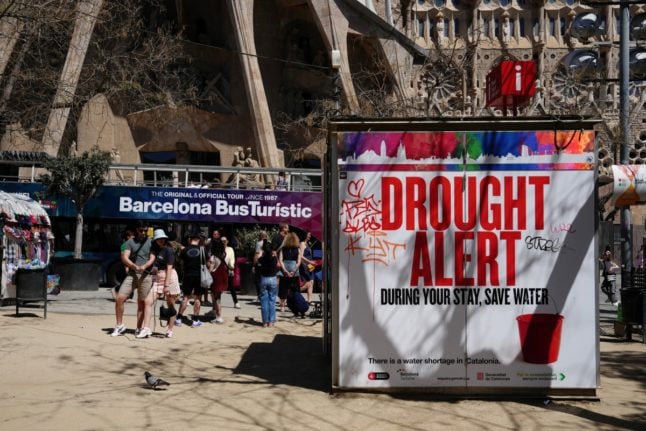Currently scheduled to start in autumn 2024 (unless it’s delayed again, which is not unlikely) the EU’s new Entry & Exit System is basically an enhanced passport check at external EU borders, including a facial scan and fingerprinting.
You can find a full explanation of the new system HERE.
Travellers crossing an external EU or Schengen border for the first time will be required to complete EES ‘pre-registration’ formalities including that facial scan and fingerprinting.
There are, however, several groups exempt from EES and one of them is non-EU nationals who have a residency permit or long-stay visa for an EU country.
So if you’re a foreigner living in the EU or Schengen zone, here’s what you need to know.
Exempt
One of the stated aims of EES is to tighten up enforcement of over-staying – IE, people who stay longer than 90 days in every 180 without a visa, or those who overstay the limits of their visa.
Obviously these limits do not apply to non-EU nationals who are resident in the EU or Schengen zone, which is why this group is exempt from EES checks. They will instead be required to show their passport and residency permit/visa when crossing a border, just as they do now.
In its explanations of how EES will work, the European Commission is clear – exempt groups include non-EU residents of the Bloc.
A Commission spokesman told The Local: “Non-EU citizens residing in the EU are not in the scope of the EES and will not be subject to pre-enrollment of data in the EES via self-service systems. The use of automation remains under the responsibility of the Member States and its availability in border crossing points is not mandatory.
“When crossing the borders, holders of EU residence permits should be able to present to the border authorities their valid travel documents and residence permits.”
How this will work
How this will work on the ground, however, is a lot less clear.
Most ports/airports/terminals have two passport queues – EU and non-EU. It remains unclear whether the non-EU queue will have a separate section for those who are exempt from EES.
It does seem clear that exempt groups will not be able to use the automated passport scanners – since those cannot scan additional documents like residency permits – but should instead use manned passport booths. However it is not clear whether these will be available at all airports/ports/terminals or how non-EU residents of the EU will be directed to those services.
There’s also the issue that individual border guards are not always clear on the processes and rules for non-EU residents of the EU – even under the current system it’s relatively commonly for EU residents to have their passports incorrectly stamped or be given incorrect information about passport stamping by border guards.
Brits in particular will remember the immediate post-Brexit period when the processes as described by the EU and national authorities frequently did not match what was happening on the ground.
The Local will continue to try and get answers on these questions.
READ ALSO What will EES mean for dual nationals
What if I live in the EU but I don’t have a visa/residency permit?
For most non-EU citizens, having either a visa or a residency permit is obligatory in order to be legally resident.
However, there is one exception: UK citizens who were legally resident in the EU prior to the end of the Brexit transition period and who live in one of the “declaratory” countries where getting a post-Brexit residency card was optional, rather than compulsory. Declaratory countries include Germany and Italy.
Although it is legal for people in this situation to live in those countries without a residency permit, authorities already advise people to get one in order to avoid confusion/hassle/delays at the border. Although EES does not change any rules relating to residency or travel, it seems likely that it will be more hassle to travel without a residency card than it is now.
Our advice? Things are going to be chaotic enough, getting a residency permit seems likely to save you a considerable amount of hassle.
Delays
Although residents of the EU do not need to complete EES formalities, they will be affected if the new system causes long queues or delays at the border.
Several countries have expressed worries about this, with the UK-France border a particular cause for concern.
READ ALSO Travellers could face ’14 hours queues’ at UK-France border
Where does it apply?
EES is about external EU/Schengen borders, so does not apply if you are travelling within the Schengen zone – eg taking the train from France to Germany or flying from Spain to Sweden.
Ireland and Cyprus, despite being in the EU, are not in the Schengen zone so will not be using EES, they will continue to stamp passports manually.
Norway, Switzerland and Iceland – countries that are in the Schengen zone but not in the EU – will be using EES.
The full list of countries using EES is: Austria, Belgium, Bulgaria, Croatia, Czechia, Denmark, Estonia, Finland, France, Germany, Greece, Hungary, Iceland, Italy, Latvia, Liechtenstein, Lithuania, Luxembourg, Malta, Netherlands, Norway, Poland, Portugal, Romania, Slovakia, Slovenia, Spain, Sweden, and Switzerland.
Therefore a journey between any of the countries listed above will not be covered by EES.
However a journey in or out of any of those countries from a country not listed above will be covered by EES.
You can find our full Q&A on EES HERE.




 Please whitelist us to continue reading.
Please whitelist us to continue reading.
Member comments